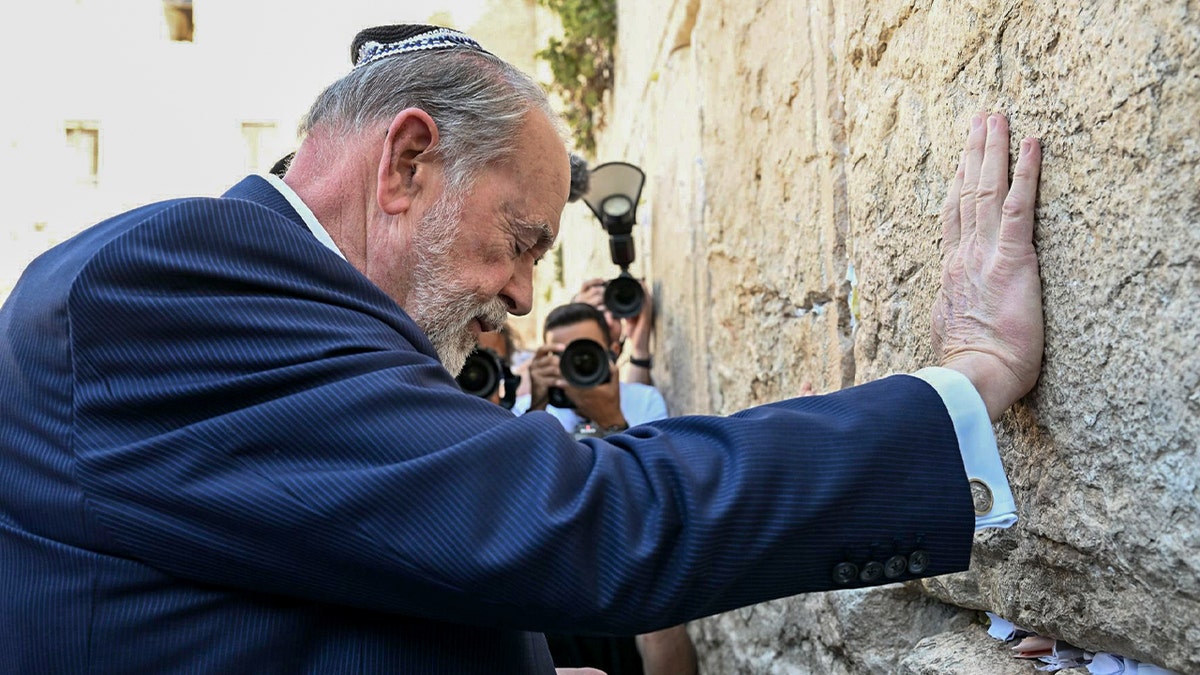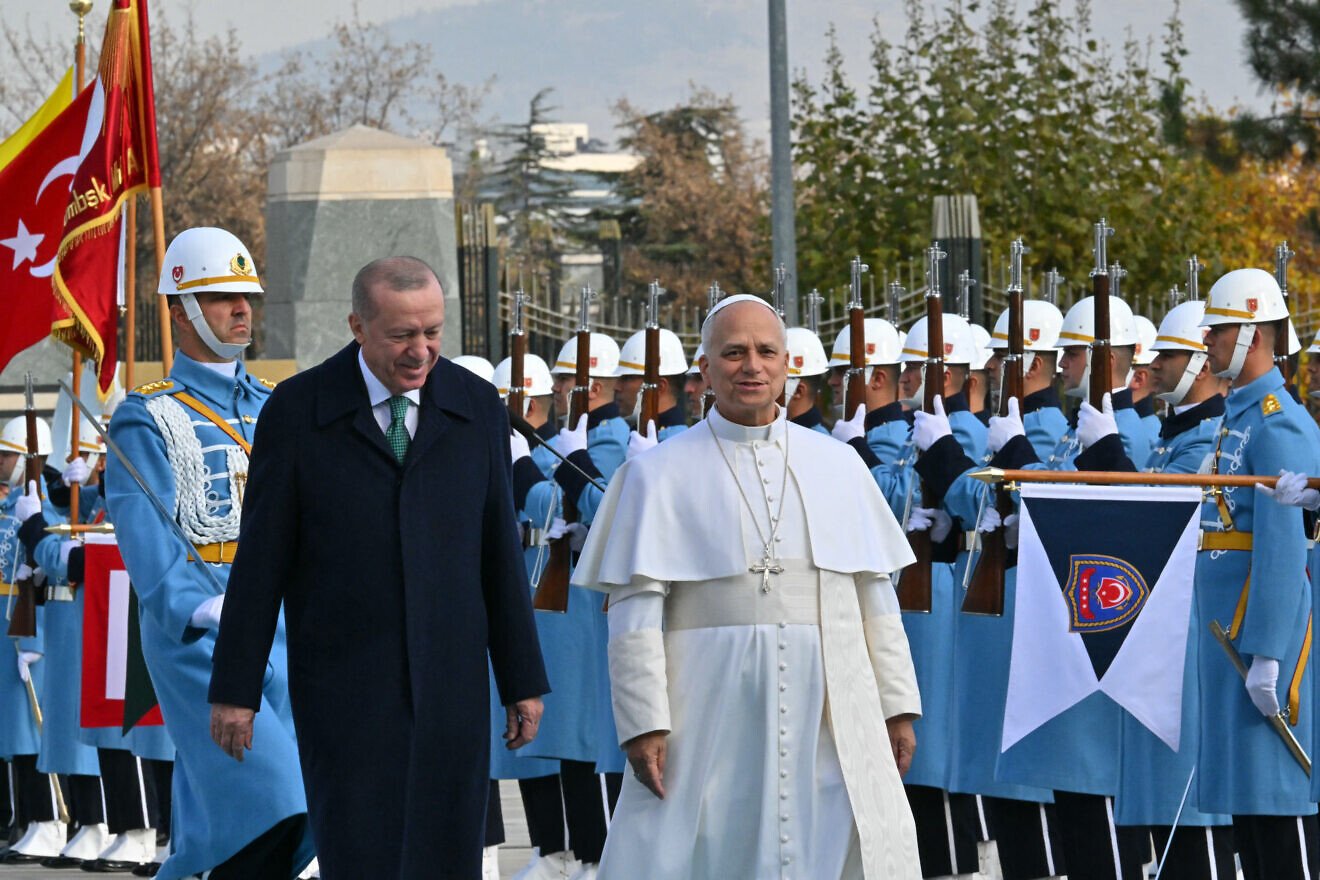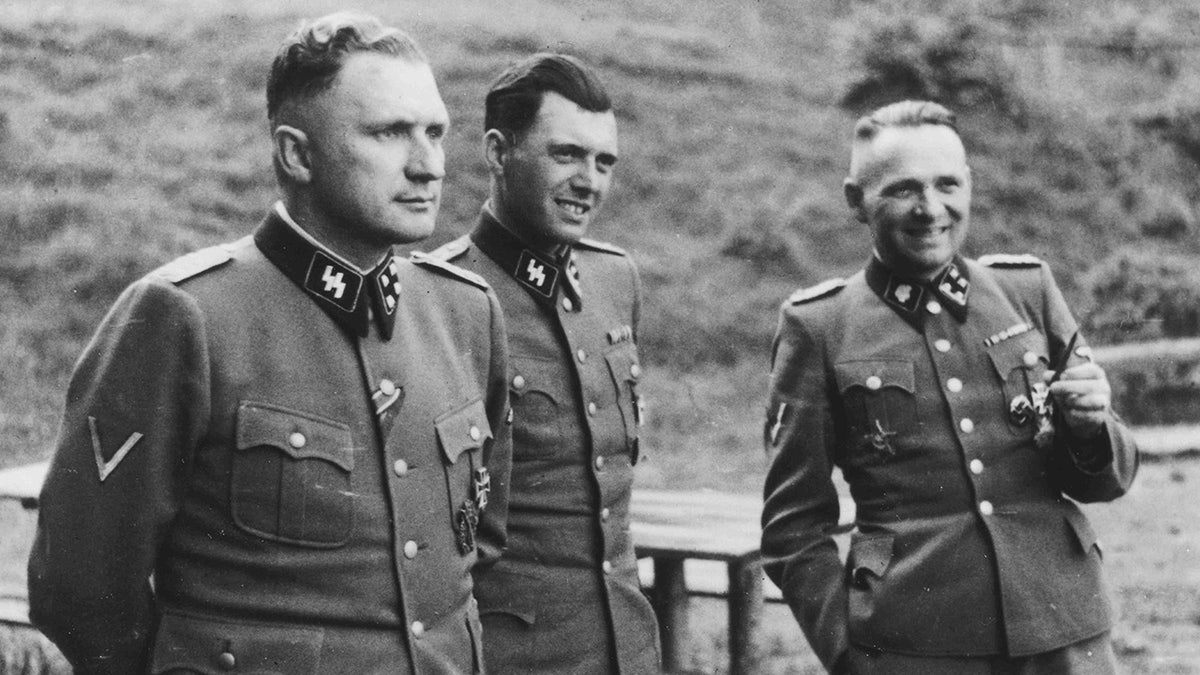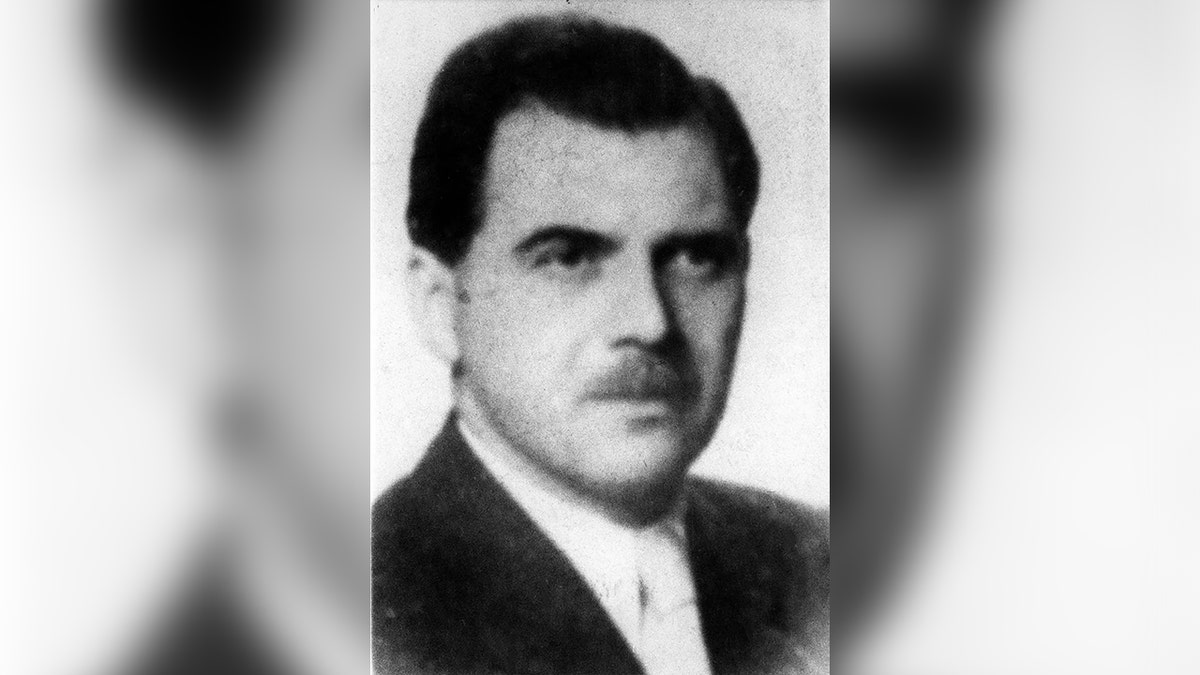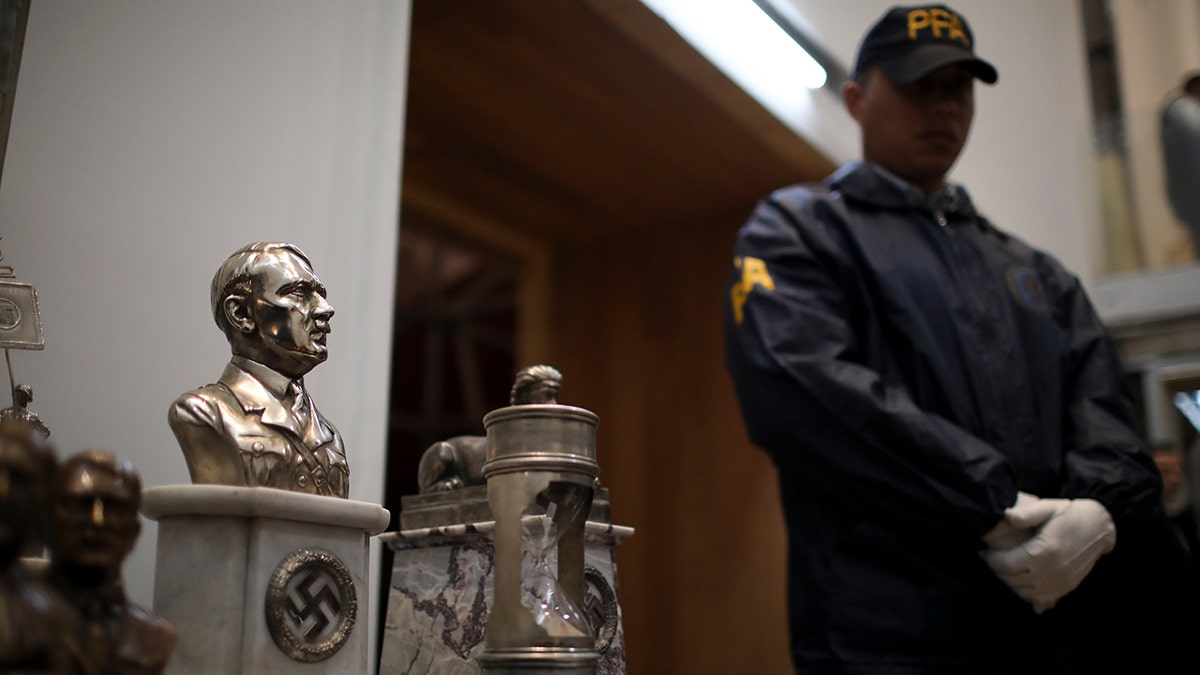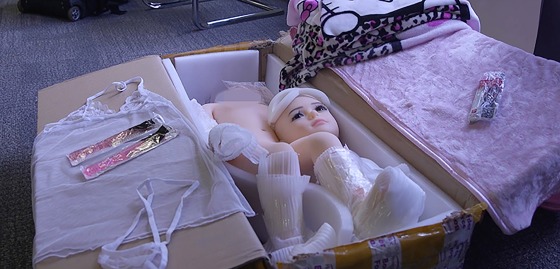Dr.
Josef Mengele, center, with Richard Baer, left, commandant of
Auschwitz,and Rudolf Hoess, former Auschwitz commandant, outside the
concentration camp in 1944.
Documents revealing how infamous Nazi doctor Josef
Mengele, known as the "Angel of Death," led an open post-war life in
Argentina were found among a massive trove of evidence released and
declassified earlier this year by President Javier Milei.
Mengele
was notorious for his role as a commander in Auschwitz, where he
conducted brutal medical experiments on prisoners, especially twins,
under the guise of scientific research. Eyewitnesses — including some
contained in the declassified Argentine files — describe his extremely
cold-blooded and macabre, sadistic nature, including torturing and
testing on twins in front of one another after sending their parents to
the gas chambers.
An entire binder is dedicated exclusively to following the footsteps of infamous Auschwitz doctor and SS commander Mengele.
The declassified archives show Argentina clearly understood by the
mid- to late 1950s who Mengele was and that he was actually present in
the country. Authorities knew he had entered the country in 1949 using
an Italian passport issued under the name Helmut Gregor, which he used
as the basis for obtaining an official immigrant ID card in 1950.
Argentina’s archival material
sheds light on the networks that sheltered Mengele. Though heavily
fragmented and multilingual — featuring Spanish, German, Portuguese and
English documents — the archive provides a snapshot of how authorities
tracked, archived, mishandled and often took no action regarding the
information they had about one of the world’s most wanted war criminals.
The
collection contains photographs, intelligence notes, immigration
records, surveillance reports and correspondence, reflecting decades of
investigation and efforts to understand the network that helped him move
across Argentina, Paraguay and ultimately Brazil. The presence of
German-language documents indicates the incorporation of foreign
intelligence or materials seized from émigré communities; Portuguese
elements suggest cross-border coordination with Brazilian sources;
English notes point to communication with U.S. or British agencies.
The
files contain an undated press clipping of an Argentine citizen born in
Poland, José Furmanski, who was a victim of Mengele, showing
Argentinian intelligence were aware of the accusations against the Nazi
criminal.
"I met Mengele. I knew him well. I saw him many times in
the Auschwitz camp, with his SS colonel’s uniform and, on top of it,
the white doctor’s coat," says Furmanski in the interview.
An
Argentine file on Josef Mengele, left, and a photo taken by a police
photographer in 1956 in Buenos Aires for Mengele's Argentine
identification document. (General Archives of the Government of Argentina/Universal History Archive/Universal Images Group via Getty Images)
The interview goes on to explain that Furmanski, who had a twin, gave his vivid testimony of the experiences performed on them. The report labeled Mengele as a pathological sadist.
"He gathered twins of all ages in the camp and subjected them to
experiments that always ended in death. Between the children, the
elderly, and women… what horrors. I saw him separate a mother from her
daughter and send one to certain death. We will never forget," Furmanski
said.
Dozens of scanned images without embedded text and internal
labeling of hundreds of pages signal a systematic effort by Argentine
intelligence to compile a complete personal file of Mengele, including
copies of foreign passports under aliases, photographs of suspected
associates, handwritten operational notes, immigration ledgers or
border-crossing logs, investigative summaries prepared for political
superiors and correspondence between Argentine officers and
international investigators.
The files corroborate Argentina’s
ambiguous postwar position of cooperating with Western democracies,
extremely disjointed bureaucracy, lack of will or understanding
regarding the serious nature of crimes committed by former Nazis in its
territory, and a reluctance by higher-hierarchy authorities to confront
how deeply Nazi fugitives were embedded within the country’s social and
political landscape.
In 1956, trying to expand his business partnership, he obtained a
legalized copy of his original birth certificate from the West German
Embassy in Buenos Aires, requested his ID be judicially amended to
reflect his real biographical data and — surreally — began using his
original legal name, a sign of how safe he felt in Argentina.
Argentine
agencies by this point not only knew who he was, where he lived, and
the fact that he married his brother’s widow and was raising their son,
but also had full details regarding his business interests in the
country. Reports in the files cite a possible visit by Mengele’s father
to Argentina to help him financially, investing in a medical laboratory
business in Buenos Aires.
This
file picture of 1956 shows the WWII war criminal Josef Mengele.
Archaeologists in Berlin have unearthed a large number of human bones
from a site close to where Nazi scientists carried out research on body
parts of death camp victims sent to them by sadistic SS doctor Mengele.
The
overt nature of his life in the country prompted West Germany to issue
an arrest warrant and request his extradition in 1959, which was denied
without further action by a local judge, citing that the request was
unofficially based on "political persecution" of Mengele, which didn't
allow for the case to be taken up.
Despite all the hard evidence accumulated, it is clear that the
information was fragmented among various different agencies that did not
fully communicate with one another. There was also a lack of direct
communication with the country’s presidency and executive branches. This
led to action on the case being decided in a disconnected manner, and
often too late — or after press leaks had already alerted Mengele of
possible concern by authorities — to yield fruitful results. Arrest
warrants, searches, and surveillance requests were often carried out or
decided after the fact, leading to dead ends.
After the 1959 extradition request and with increased international pressure on Argentina, Mengele escaped the country to Paraguay, while his wife and stepson moved to Switzerland.
This
is evident from a memo from the Federal Coordinate Directorate marked
as strictly secret and confidential detailing a search for Mengele and
his business interests dated July 12, 1960 — a point when Mengele had
already left Argentina for Paraguay.
"I bring to the knowledge of
the Chief that from the investigations carried out in order to fulfill
the referenced O.B., it follows that JOSÉ MENGELE, served as a partner
of the medical laboratories ‘FADRO-FARM’ located at Drysdale 3573
Street, in Carapachay, District of Vicente López, and with offices,
since July of this year, at Cramer 860 Street, Capital. The subject,
listed as a medical doctor, was entered into the firm on July 10, 1958,
as a contributing partner of $10,000 pesos in capital, and withdrew from
the partnership in April of 1959," the report stated.
"Since entering Argentina, the subject resided on the property of the
Mengeles, using the name of Dr. GREGOR […], the subject manifested that
he had arrived in Argentina using a different name and distinct from his
profession […]. Thus, it appears that, while maintaining his real name,
the subject belonged to the SS Society […] during which time he
demonstrated being nervous, having stated that during the war he acted
as a physician in the German S.S., in Czechoslovakia, where the Red
Cross labeled him a ‘war criminal.’ He had studied Anthropology and was
known to the Justice in the courts of Nuremberg, especially regarding
the study of skulls and bones, but that union was considered a crime in
National Socialist Germany," the report states about Mengele when, in
the course of changing his name from his fake alias to his real
identity, the Nazi "explained" his motives for originally not using his
real identity, it said.
Argentina’s intelligence community kept following Mengele, mostly
through press reports and contacts with foreign agencies. Mengele
acquired Paraguayan citizenship and was protected by the government of
Paraguayan dictator Alfredo Stroessner, whose family originated in the
same Bavarian town as him.
The archives reveal Mengele entered
Brazil clandestinely at some point in 1960 through the tri-border area
near Paraná state. He was helped by German Brazilian farmers who were
Nazi sympathizers and provided multiple rural safehouses for several
years.

Josef Mengele with an unidentified woman in Brazil in 1975
Though the Argentine files are thin on details and rely
heavily on media clippings at this point, Argentina was aware that
Mengele had adopted the alias Peter Hochbichler, though sometimes he
also used a Portuguese version of his real name — José Mengele. For the
latter part of the 1960s and throughout the 1970s, he began living in
properties belonging to the German Bossert and Stammer families in São
Paulo state, Brazil.
A
police officer stands in front of a cache of Nazi artifacts discovered
in 2017, during a press conference in Buenos Aires, Argentina, Oct. 2,
2019.
Mengele died in 1979 when he suffered a stroke while swimming at sea
in the coastal town of Bertioga. He was buried under the false name of
Wolfgang Gerhardt, but multiple leads led to his body being exhumed and
his remains being positively identified by Brazilian authorities in
1985. DNA testing further confirmed the findings in 1992.
Solly
Boussidan is an international journalist covering Latin America for Fox
News Digital. He has previously covered international affairs, war,
finance and travel for several U.S. and international outlets. He is
currently based in Brazil.












